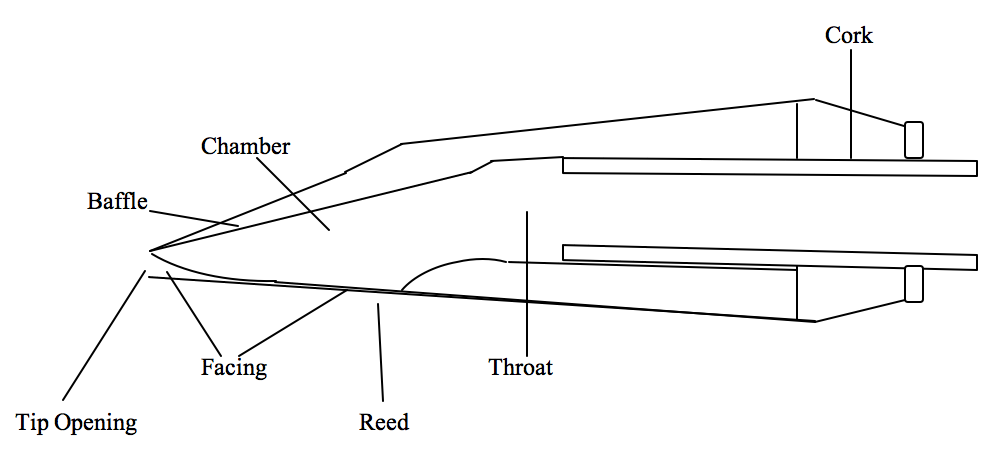 In the first installment of this article, I discussed the importance of the reed and mouthpiece to produce a mature classical saxophone tone. In this installment, I will discuss additional factors.
In the first installment of this article, I discussed the importance of the reed and mouthpiece to produce a mature classical saxophone tone. In this installment, I will discuss additional factors.
Ligatures
A good ligature is necessary to hold the reed against the table of the mouthpiece. It is believed by several saxophonists the ligature has less of an effect on one’s tone quality than the mouthpiece or reed, however it can make a sizable difference in sound and responsiveness.
Air Support
For any wind instrumentalist, air support is key. There are several self-help links to be found on the internet, but here are a few hints to assist in better air support. In a sitting position with feet flat on the floor and your saxophone in hand, slowly breathe in a deep breath until your lungs feel full. At this point you may feel parts of your back expanding against the back of your chair. Exhale slowly until your lungs feel empty. Again, slowly breathe in a deep breath until your lungs feel full but this time perform an easy note—perhaps an open C-sharp—on your saxophone at a louder but comfortable volume. Perform this note two more times following our steps. Next, perform a slurred major scale using this exercise. Does the airstream feel consistent? Has your tone improved?
Embouchure
There are many opinions on how to form a proper saxophone embouchure. Contact a local saxophone teacher to learn first-hand what may work best. In the meantime, here are steps I use to form a proper classical saxophone embouchure. After properly putting together the mouthpiece, reed, and ligature, look to the side of the mouthpiece and find the location where the reed separates from the mouthpiece. Carefully insert a business card between the reed and mouthpiece to find the point where the reed separates from the mouthpiece. The point at which the reed separates from the mouthpiece is generally thought of as where one’s top teeth should be located on the top of the mouthpiece. Now that we know where to place the top teeth on the mouthpiece for a well-formed embouchure, here are steps to form an embouchure and start a tone on the saxophone.
- Place the top teeth on top of the mouthpiece where the reed separates from the mouthpiece.
- Roll a portion of the bottom lip (not too much) over the bottom teeth.
- Close mouth around mouthpiece and reed and firm corners.
- Place the tip of tongue on the tip of reed.
- Take a breath through the nose and build up air pressure behind the tongue.
- Release the tongue
Mouthpiece Cushions or Mouthpiece Patches
Mouthpiece cushions, or patches, help prevent one’s teeth from vibrating while playing. While mouthpiece cushions may make performing saxophone more comfortable, they can influence tone quality. By essentially making one’s mouth more open—even by a small degree—tone quality can sound a bit darker or more rounded.
Open Throat
A more open throat may assist in a more rounded, supported tone. A somewhat closed throat may result in a pinched tone quality.
Tongue Position
Tongue position can affect not only the tone, but if the note speaks properly. A higher tongue position can offer a brighter tone on lower notes, while a lower position can offer a darker or more robust sound. A higher tongue position may also offer a clearer tone on higher notes in the saxophone range, while a lower position may make the lower octave sound. Try practicing the saxophone with different vowel sound formations (A, E, I, O, and U) in the oral cavity. One may find a bright “A” (as in the word, “say”) formation works well for upper register notes, while an “ah” (as in “tah”) or “aw” (as in “paw”) works well for lower register notes.
Neck Strap
The adjustment of neck strap can affect the saxophone tone. If it’s too high, the angle of the airstream will be affected, and the tone may sound too bright. If it’s too low, the angle of the airstream will also be affected, and the tone may sound dull or muffled. Beware of softer, cushion-like material on the neck strap, which may allow the saxophone to bounce up and down while performing.
Tone vs. Intonation
Lastly, let’s address tone vs. intonation. If one performs the saxophone with an embouchure near the tip of the mouthpiece, the tone will suffer because the reed cannot vibrate. Conversely, one may perform with a beautiful saxophone tone while the mouthpiece is pushed much further in on the neck. This will, of course, make the pitch of the saxophone quite sharp. For those with good tone and poor pitch, they may only be listening to the sound of their instrument, not being conscientious of matching the pitch of those around them.
Conclusion
There is tremendous variety regarding tone quality for jazz saxophone artists, however classical saxophone artists can be a bit more limited in what is accepted as a good tone. Next time when a friend asks you to identify a recording artist, listen to the tone quality first and remember this article. Good luck!





















